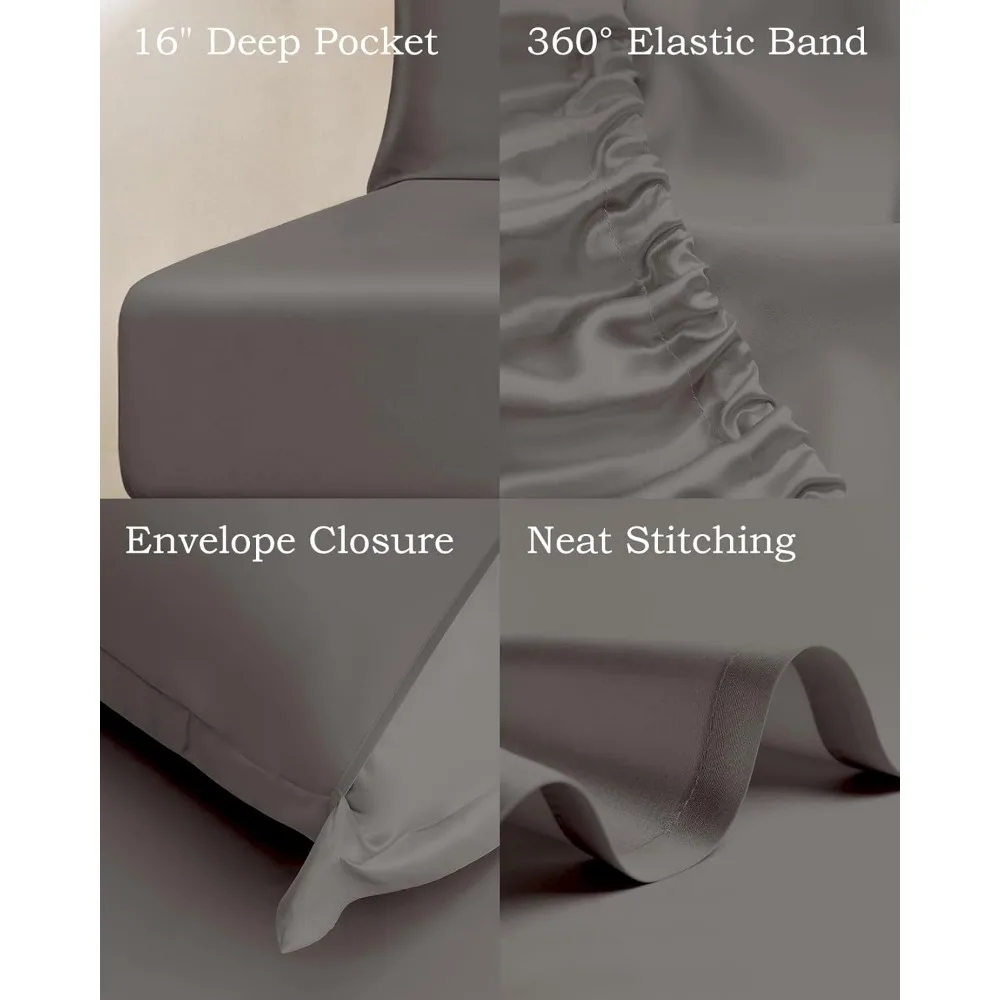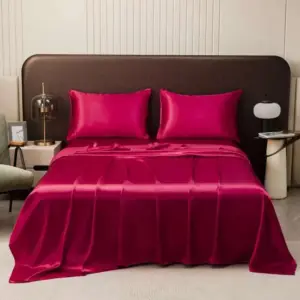The Challenge of Sleeping in Hot Weather
Have you ever found yourself tossing and turning on a hot summer night, flipping your pillow repeatedly in search of the cool side? You’re not alone. Hot weather creates a perfect storm for sleep disruption – from uncomfortable night sweats to that frustrating feeling of your sheets clinging to your body. These aren’t just minor annoyances; they actually interfere with your body’s natural sleep processes.
Our bodies are designed to drop in temperature as we fall asleep – it’s an essential part of our sleep cycle. Sleep experts recommend a bedroom temperature between 65-68°F (18-20°C) for optimal rest. When the mercury rises above these levels, our natural cooling mechanisms get overwhelmed, making it difficult to fall and stay asleep.
Unfortunately, conventional bedding materials often make matters worse. Cotton sheets, while popular, can absorb moisture but then remain damp against your skin. Synthetic materials tend to trap heat, creating a mini sauna effect under your covers. The wrong bedding choice can transform what should be a restful sanctuary into an uncomfortable, sleep-depriving environment.
Choosing the right bedding material becomes crucial for quality sleep during warm weather, which is why many people are discovering the remarkable amazing benefits of mulberry silk sheets for hot weather comfort. The question many ask is whether silk bedsheets are good for hot weather, and the answer might surprise you.
Why Silk Sheets Are Ideal for Hot Weather Sleepers
Silk stands apart from other bedding materials when temperatures rise. This natural fiber has been prized for over 5,000 years for good reason – it possesses inherent temperature-regulating properties that make it uniquely suited for hot weather sleeping.
Historically, silk was highly valued in warm climate regions across Asia and the Mediterranean. Royal families and the wealthy would sleep on silk sheets during hot summers long before modern cooling systems existed. This wasn’t just about luxury – they recognized silk’s practical benefits for comfort in heat.
What makes silk exceptional for hot weather is its natural ability to adapt to your body’s needs. Unlike synthetic alternatives that simply feel cool to the touch initially, silk actively works with your body throughout the night to maintain comfort. Its natural properties address multiple hot weather sleep challenges simultaneously – from temperature regulation to moisture management.
The cooling silk sheets available today build on this ancient wisdom, incorporating modern manufacturing techniques while preserving silk’s natural benefits. Understanding the complete guide to mulberry silk bed sheets helps explain why this material remains unmatched for hot weather sleeping.
Superior Temperature Regulation Properties of Silk
What makes silk truly remarkable is its unparalleled ability to regulate temperature. This isn’t just marketing hype – it’s rooted in silk’s unique molecular structure. Unlike plant-based fibers like cotton, silk is composed primarily of protein fibroin, arranged in a way that creates natural temperature-balancing properties.
Silk’s amino acid chains respond differently to temperature changes than other materials. When your body heat rises, silk’s microscopic structure actually expands slightly to release excess warmth. When you cool down, these same fibers contract to provide insulation. This creates what scientists call “thermal equilibrium” – a stable microclimate around your body regardless of ambient temperature.
The thermal conductivity of silk is also unique. Studies show that silk transfers heat away from the body about 30% more efficiently than cotton when temperatures rise. Yet unlike synthetic “cooling” fabrics, silk doesn’t feel cold and clammy against the skin – it maintains a naturally comfortable touch temperature.
This intelligent temperature regulation happens because silk fibers contain tiny air pockets within their structure. These pockets trap a thin layer of air that serves as a natural buffer zone between your body and the outside environment. In hot weather, this buffer helps dissipate excess heat while preventing your skin from feeling sticky or overheated.
Understanding the science of how silk sheets regulate temperature reveals why they perform so differently from other bedding materials. These properties also make silk sheets particularly beneficial for those with sensitive skin, as temperature fluctuations often trigger skin issues.
Exceptional Moisture-Wicking Abilities
One of silk’s most impressive capabilities for hot weather comfort is its extraordinary moisture management. When you sleep hot, you inevitably perspire – and how your bedding handles that moisture directly impacts your comfort.
Silk can absorb up to 30% of its weight in moisture without feeling wet to the touch. This is significantly better than cotton, which might absorb more total moisture but feels noticeably damp against your skin. The key difference is in how these materials handle the absorbed moisture:
- Silk wicks moisture away from your body and allows it to evaporate quickly
- Cotton absorbs moisture and tends to hold onto it, creating a damp sleeping environment
- Silk’s protein structure processes moisture differently than plant-based fibers
- Moisture travels along the silk fiber rather than being trapped within it
This wicking action happens because silk fibers have a triangular cross-section with rounded edges, creating tiny channels that draw moisture away from your skin through capillary action. The moisture then spreads across the fabric’s surface area, allowing for rapid evaporation.
For hot sleepers, this translates to a consistently dry and comfortable sleep surface throughout the night. You’re less likely to wake up with that uncomfortable damp feeling, even during particularly warm nights.
The mulberry silk sheets from Sanctuary Soft are especially effective at moisture management because they maintain silk’s natural properties without chemical treatments that might interfere with this wicking ability.
Unmatched Breathability for Hot Nights
Breathability is perhaps the most critical factor for bedding performance in hot weather, and silk excels in this area. When we talk about breathability in fabrics, we’re referring to how easily air passes through the material – allowing heat and moisture to escape rather than becoming trapped against your body.
Silk’s natural structure creates an exceptionally breathable sleep surface. Unlike tightly woven synthetic fabrics or even high thread count cotton, silk allows for optimal airflow thanks to its unique molecular arrangement. The individual silk fibers are incredibly fine – measuring about 1/5 the diameter of a human hair – which creates a loose structure that facilitates air movement.
This superior air circulation prevents the buildup of heat under your covers. As you move during sleep, fresh air can flow freely through the fabric, carrying away excess warmth and humidity. This constant air exchange helps maintain that ideal sleep temperature zone throughout the night.
The length of silk fibers also contributes to its breathability. Mulberry silk contains long, continuous fibers (sometimes called “long-staple” fibers) that create fewer connection points in the fabric. Fewer connections mean more space for air to flow through, enhancing the cooling effect.
For the ultimate breathability experience, many hot sleepers prefer 100% silk sheets without any synthetic blends that might compromise this natural airflow capability.
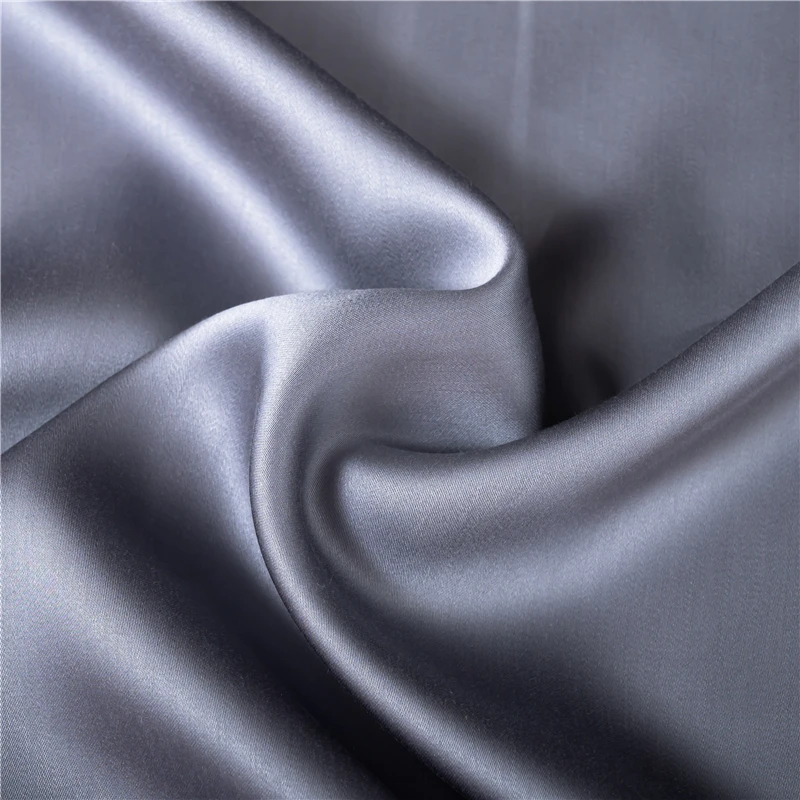
Lightweight and Luxuriously Smooth Feel
Beyond its technical cooling properties, silk offers a tactile experience that enhances comfort during hot weather. The naturally lightweight nature of silk makes it feel almost weightless against your skin – a stark contrast to heavier cotton or synthetic options that can feel stifling when temperatures rise.
Quality silk sheets drape effortlessly around your body without clinging or restricting movement. This gentle embrace allows your skin to breathe and move freely throughout the night. You won’t experience that “trapped” feeling that sometimes comes with other materials in warm weather.
The smooth surface of silk also minimizes friction against your skin. With a coefficient of friction similar to human skin cells, silk creates almost no resistance as you move during sleep. This reduces those small disturbances that might otherwise wake you during warm nights when you’re already sleeping lightly.
A standard set of queen-sized silk sheets in the 19-22 momme range typically weighs about half as much as their cotton equivalents. This lightness isn’t just about physical weight – it creates a psychological sense of coolness as well. The brain associates lightweight fabrics with cooler temperatures, enhancing your perception of comfort.
Many users report that transforming their sleep quality begins with this distinctive lightweight feel, which provides immediate relief during hot weather nights before they even experience the other cooling benefits.
Debunking Common Myths About Silk in Hot Weather
Despite silk’s excellent hot weather properties, several persistent myths cause confusion about its suitability for warm nights. Let’s separate fact from fiction:
Myth: Silk makes you sweat more in hot weather
Reality: Silk actually reduces sweating by efficiently wicking away moisture and regulating temperature. The confusion often stems from experiences with synthetic satin (polyester) that mimics silk’s appearance but lacks its breathability.
Myth: Silk is only for winter use
Reality: Silk’s unique temperature-regulating properties make it suitable for year-round use. It helps keep you cool in summer and warm in winter by creating a stable microclimate regardless of ambient temperature.
Myth: All shiny bedding materials have similar properties
Reality: Many people confuse silk with synthetic satin. While both have a lustrous appearance, their performance differs dramatically. Genuine silk is breathable and moisture-wicking; synthetic satin traps heat and moisture.
Myth: Silk is too delicate for regular use
Reality: Quality mulberry silk is surprisingly durable when properly cared for. Its natural protein structure creates resilient fibers that can withstand regular use.
Understanding why to choose mulberry silk sheets helps clarify these misconceptions and reveals the scientific basis for silk’s cooling benefits rather than relying on marketing claims or hearsay.
Silk vs. Other Popular Bedding Materials for Hot Weather
To truly appreciate silk’s hot weather advantages, it helps to compare it directly with other common bedding materials:
| Feature | Silk | Cotton | Linen | Polyester/Synthetic |
|---|---|---|---|---|
| Temperature Regulation | Excellent – adapts to body temperature | Moderate – absorbs heat | Good – initially cool but less adaptive | Poor – traps heat |
| Moisture Management | Superior wicking without dampness | Absorbs moisture but remains wet | Good absorption but can feel damp | Poor – traps moisture |
| Breathability | Excellent airflow | Moderate, decreases with higher thread count | Very good | Poor |
| Weight/Feel | Lightweight, smooth | Medium weight, can feel heavy when humid | Lightweight, textured | Varies, often clingy in heat |
| Longevity with Proper Care | 10-15 years | 2-5 years | 3-5 years | 1-2 years |
Cotton sheets, while natural and widely used, tend to absorb moisture and hold it against the skin. This creates that uncomfortable damp feeling during hot nights. Cotton also becomes heavier when humid, adding to discomfort.
Linen offers excellent initial coolness and is highly breathable, making it a good hot weather option. However, it lacks silk’s smooth texture and adaptive temperature regulation. Many find linen’s characteristic texture too rough for direct skin contact.
Synthetic materials like polyester (often marketed as “microfiber”) perform poorly in hot weather despite their affordable price point. They typically trap both heat and moisture, creating a stuffy sleep environment that can lead to night sweats.
Exploring the benefits that make silk trump cotton reveals why more hot sleepers are making the switch despite the higher initial investment.
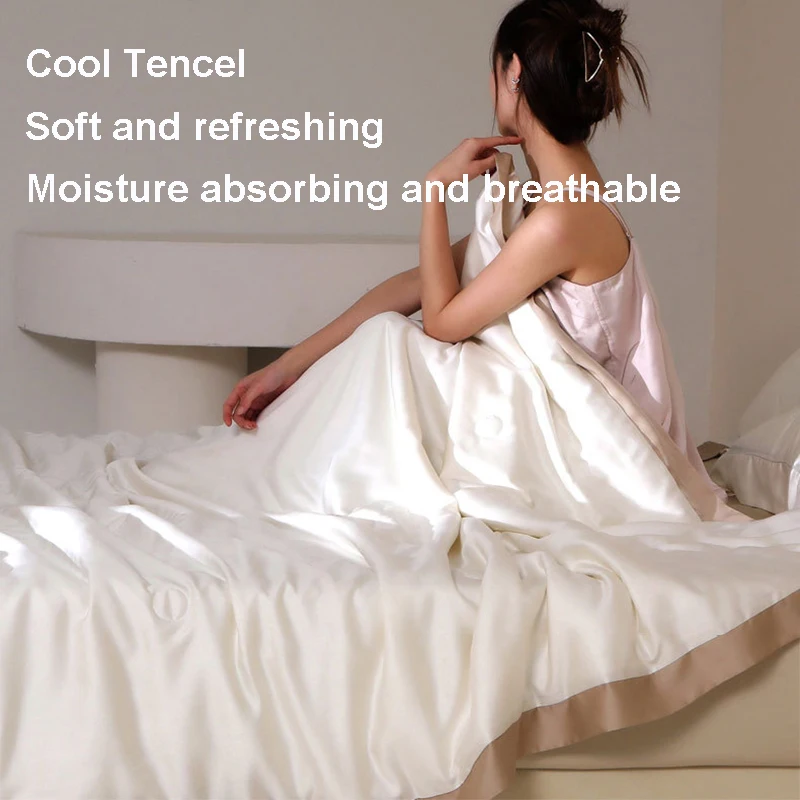
Additional Year-Round Benefits of Silk Sheets
While silk’s hot weather performance is impressive, its benefits extend far beyond summer months, making it a versatile investment for your bedroom:
• Hypoallergenic Properties: Silk naturally resists dust mites, mold, and mildew – common allergens that can disrupt sleep. Its protein structure creates an inhospitable environment for these microorganisms.
• Skin and Hair Benefits: The smooth surface of silk creates minimal friction against skin and hair. This reduces sleep creases, hair breakage, and can help preserve facial moisturizers. The skin benefits of mulberry silk bedding are particularly valuable for those with sensitive or aging skin.
• Natural Resistance to Allergens: Beyond dust mites, silk resists many common allergens that can trigger nighttime symptoms, helping those with allergies sleep more comfortably year-round.
• Longevity: With proper care, quality silk sheets typically last 10-15 years – significantly longer than cotton alternatives. This durability makes silk an economical long-term investment despite its higher initial cost.
• Noise Reduction: Silk generates minimal noise when you move during sleep, unlike some crinklier materials like certain synthetic options or low-quality cotton.
Exploring the full range of silk sheets reveals these additional benefits that complement silk’s hot weather performance.
Choosing the Right Silk Sheets for Warm Climates
Not all silk sheets are created equal when it comes to hot weather performance. Here’s what to look for to maximize cooling benefits:
Momme Weight: For optimal hot weather comfort, look for silk sheets in the 19-22 momme range. This provides the ideal balance between durability and breathability. Sheets below 19 momme may be too thin and fragile, while those above 25 momme, while luxurious, might not be as breathable for the hottest nights.
Material Quality: 100% pure mulberry silk offers the best performance. Look for certification that guarantees authentic mulberry silk without synthetic blends or fillers that could compromise breathability.
Weave Type: The charmeuse weave, characterized by a smooth front and textured back, provides optimal airflow while maintaining silk’s characteristic smoothness. This weave enhances silk’s natural cooling properties.
Color Considerations: Lighter colors reflect heat rather than absorbing it. For maximum cooling in the hottest environments, consider white, ivory, or other pale colors. Darker colors can absorb up to 5% more heat in direct sunlight.
Thread Construction: Look for sheets using single-ply threads rather than multiple-ply. Single-ply construction maintains silk’s natural breathability without adding unnecessary bulk.
Finding the best silk bedding for summer involves balancing these factors to match your specific sleep environment and preferences.
Essential Care Tips for Maintaining Silk’s Cooling Properties
Proper care ensures your silk sheets maintain their cooling benefits for years to come:
Gentle Washing: Use cool water (below 86°F/30°C) and a pH-neutral detergent specifically formulated for silk. Avoid bleach, optical brighteners, or enzymes that can damage silk’s protein structure.
Proper Drying: Air-dry silk sheets away from direct sunlight, which can break down fibers and fade colors. Hang sheets over a non-metal rack or clothesline until just slightly damp, then finish with brief air-fluffing (no heat) in the dryer if desired.
Minimal Ironing: If needed, iron only on the lowest silk setting while sheets are still slightly damp. Always iron on the reverse side to protect the smooth surface that gives silk its cooling feel.
Appropriate Storage: Store silk sheets in a cool, dry place in a breathable cotton storage bag rather than plastic. This prevents moisture buildup that can damage fibers and compromise breathability.
Rotation Schedule: If possible, rotate between two sets of silk sheets to extend their lifespan. This gives each set time to fully air out between uses, maintaining optimal moisture management.
The investment in proper care pays dividends in maintaining the cooling properties that make silk ideal for hot weather. Many customers find that queen-size silk sheets are their preferred starting point when upgrading their bedding.
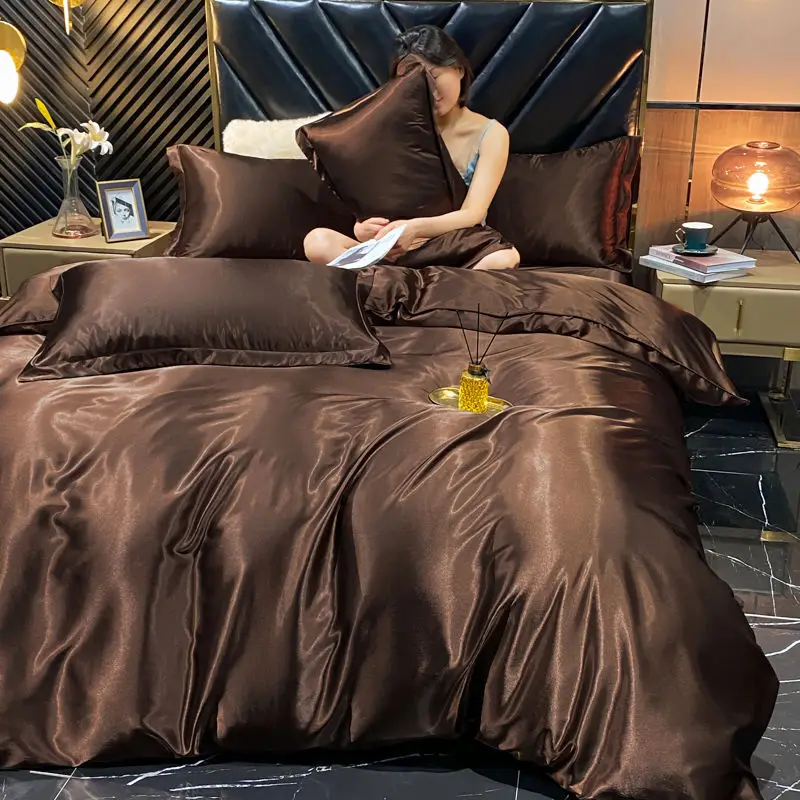
Is Silk Worth the Investment for Hot Sleepers?
The premium price of silk sheets often raises questions about value – particularly for those whose primary concern is hot weather comfort. When evaluating this investment, consider these factors:
Silk sheets typically cost 3-5 times more than basic cotton alternatives. However, their extended lifespan (10-15 years with proper care versus 2-5 years for cotton) significantly reduces the cost-per-use over time. Breaking down the numbers reveals that premium silk sheets often cost just pennies more per night over their lifetime.
Beyond economics, the improved sleep quality provides immeasurable value. Hot sleepers who switch to silk often report falling asleep faster and experiencing fewer nighttime awakenings due to temperature discomfort. Given that quality sleep impacts everything from cognitive function to immune health, this benefit alone justifies the investment for many users.
Some hot sleepers also find they can reduce air conditioning usage when sleeping on silk, potentially offering energy savings that offset a portion of the initial investment. The natural temperature regulation reduces the need to keep rooms as cool for comfortable sleep.
Evaluating whether silk bedsheets are worth it ultimately depends on your personal comfort priorities and budget – but many hot sleepers find the benefits justify the cost.
Full-size Silk Sheets, King Size Silk Sheets, Queen Size Silk Sheets, Twin Size Silk Sheets, Washable Silk Sheets
Price range: $95.95 through $178.37 Select options This product has multiple variants. The options may be chosen on the product page100% Silk Sheets, Green Silk Sheets, King Size Silk Bedding Set, Mulberry Silk Bedding Sets, Queen Size Silk Bedding Set
Price range: $1,246.21 through $1,615.22 Select options This product has multiple variants. The options may be chosen on the product pagePink Silk Sheets, Twin Size Silk Sheets
$171.80 Select options This product has multiple variants. The options may be chosen on the product pageFull-size Silk Sheets, Pink Silk Sheets
$136.31 Select options This product has multiple variants. The options may be chosen on the product pageGrey Silk Sheets, Silk Sheet and Pillowcase Set
Price range: $88.20 through $146.64 Select options This product has multiple variants. The options may be chosen on the product pageBamboo Silk Sheets, Cooling Silk Sheets
Price range: $130.76 through $177.80 Select options This product has multiple variants. The options may be chosen on the product page
How Quickly Will You Notice a Difference with Silk Sheets?
Many people wonder how long it takes to experience silk’s cooling benefits when switching from conventional bedding. Most users report an immediate difference from the first night, particularly in these areas:
The initial tactile sensation is often the first thing people notice – the lightweight, smooth feel against the skin provides immediate comfort. This physical difference is apparent before you even fall asleep.
Within the first few nights, most users report reduced night sweats and fewer instances of waking due to overheating. The moisture-wicking properties begin working immediately, though you might become more consciously aware of this benefit after several nights of better sleep.
After about a week, many notice improved sleep continuity – fewer disruptions and more consistent deep sleep. This cumulative effect builds as your body adjusts to maintaining more stable temperature throughout the night.
Long-term users often report that seasonal transitions become much easier, as their bedding naturally adapts to changing conditions without needing complete bedding swaps between seasons. Understanding how silk prevents night sweats helps explain why these benefits appear so quickly for many users.
The Environmental Benefits of Choosing Silk Bedding
Beyond personal comfort, silk offers several environmental advantages worth considering:
Silk is completely biodegradable, naturally breaking down within 1-5 years when composted, compared to synthetic bedding that can persist in landfills for decades or centuries. This biodegradability extends to silk’s full lifecycle.
As a renewable resource, silkworms feed on mulberry leaves that regrow quickly without requiring intensive agricultural practices. The mulberry trees require minimal water and can grow in diverse climates without extensive fertilization.
The temperature-regulating properties of silk can reduce dependency on energy-intensive heating and cooling systems. Many users report being able to adjust their thermostat by 2-3 degrees when sleeping on silk, potentially reducing energy consumption.
When purchasing silk, look for manufacturers who follow sustainable and ethical production practices. Many modern silk producers now use improved methods that prioritize both environmental responsibility and humane treatment throughout the production process.
For those looking to make a complete bedding transition, mulberry silk bedding sets provide a coordinated approach to enjoying these environmental benefits alongside silk’s cooling properties.

